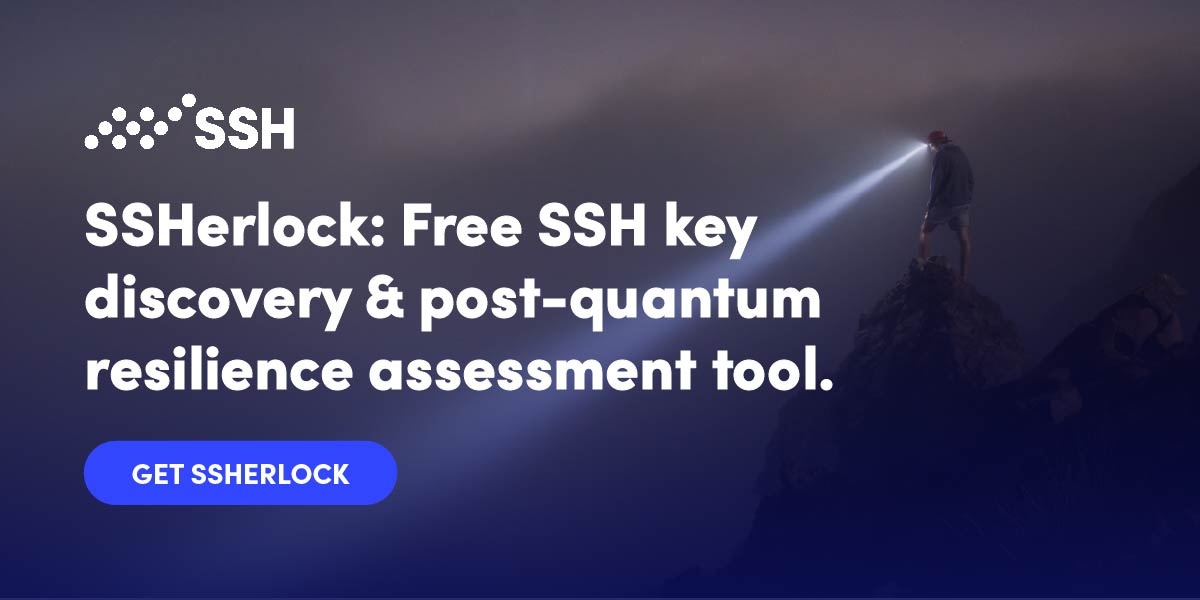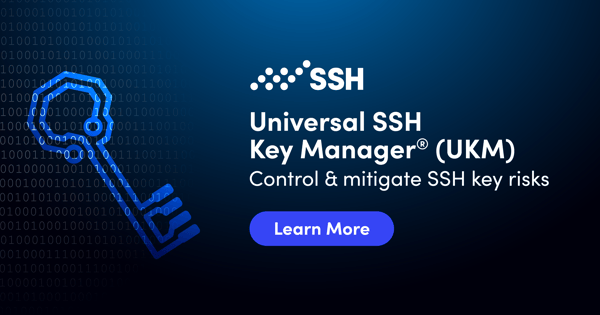Introduction to Encryption Key Management
Encrypted keys are a central component of any effective database management solution. Traditionally, companies use encryption protocols — like the SSH protocol — to keep their data secure from unauthorized access. Once data is encrypted, even cyberattackers with the right credentials are unable to unencrypt information without the right key.
Making the most out of encryption key management (EKM) is an important component of any cybersecurity operation. But even the most password-protected businesses often remain unaware of the benefits of a strong encryption key management solution. Organizations may juggle thousands of keys, with little understanding of how often keys need to be retired — or how to keep them away from cyberattackers.
In addition to Privileged Access Management (PAM), encryption key management is one of the central components of cybersecurity. Moving your enterprise into a secure environment will require an understanding of some basic encryption key management properties. Let’s take a look at how encryption keys work and why encryption key management is so important for enterprise security.
Contents
What is Encryption Key Management?
Encryption Key Management Best Practices
Choosing the Right Encryption Key Management Software
The Future is Keyless
Encryption Key Management Solution
What is Encryption Key Management?
The basic concept behind encryption is simple: encryption encodes data in order to protect information from unauthorized access. With the right encryption mechanism, data can remain secure even when privileged access credentials are compromised. Encryption uses ciphertext to encode data, which is achieved using an encryption algorithm.
Once data is encrypted, an encryption key is necessary to access ciphertext. Growing businesses often underestimate the number of encryption keys necessary to access their data — many organizations make use of thousands of keys for effective encryption. All too often, businesses protect encryption keys with passwords that are easily compromised, using on-premises servers for storage.
The effectiveness of encryption depends on the security of your encryption keys. That’s where encryption key management comes into the picture.
In order to move forward with an effective encryption solution, enterprises will need an effective strategy for managing encryption keys. To prevent a cyberattacker from using encryption keys to access sensitive data, businesses will need more than just a password-protected key vault. The idea behind encryption key management is to actively manage encryption keys in a separate location from the rest of the enterprise data.
Within encryption key management, there are plenty of strategies for secure key management — from an on-premises key management server to cloud-based key management using SaaS. The uniting factor among these different approaches is that encryption key management involves an active, continuous approach to key management. Using encryption key management, keys aren’t just stored — they are actively being protected against evolving threats.
Encryption Key Management Best Practices
When it comes to maintaining secure encryption keys, strategy is everything. With a good understanding of encryption key management best practices, you can help to ensure your entire organization is minimizing the risk of data compromise. In the long run, keeping up with encryption key management best practices is a reliable way to save money, with improved efficiency and effectiveness for your entire security system.
Here are some basic strategies IT admins can implement for a successful approach to encryption key management.
1. Set up a secure algorithm
The encryption algorithm is the central component of any encryption key management process. No principles of key management will be effective if your enterprise uses a weak algorithm for encryption. The algorithm is the first line of defense against cyberattackers, and it’s important not to overlook this crucial step. RSA and AES are both common encryption algorithms, and each requires a unique type of encryption key. Asymmetric keys are typically used for data in motion.
2. Plan out your Encryption Key Management approach
A successful encryption key management system will be accessible to high-privileged IT admins from a centralized location. As an enterprise grows, an increasing number of keys will be necessary to decipher encrypted data. Businesses can quickly accumulate thousands of keys — and a centralized approach to encryption key management can make this process much more manageable.
3. Document your authorization history
For many businesses, some form of documentation will be necessary to ensure proper security standards. When it’s time for a security audit from a regulatory organization, keeping records of your authorization history is crucial for a successful audit. Documentation allows you to ensure your data hasn’t been accessed by any unauthorized users — a task that’s important for external audits, as well as internal security checks.
4. Understand the lifecycle of an encryption key
An effective key won’t last forever. As time goes on, an encryption algorithm will inevitably grow weaker, with an increased risk of security compromise. Encryption key management requires an understanding of the lifecycle of an encryption key, paired with the appropriate amount of rotation for your keys. There are three basic phases in the lifecycle of any encryption key: generation, rotation, and retirement.
During the rotation process, it’s important to ensure that a new algorithm is ready to go before an old algorithm is retired. Third-party encryption key management providers often include secure rotation services to ensure data isn’t exposed during the rotation process.
5. Make sure your infrastructure is secure
Your encryption algorithm shouldn’t be your only line of defense against cyberattackers. A high-security, on-premises environment allows you to protect your data from attackers before they even have the chance to access encrypted data. Hardware security devices can include physical barriers to entry, contingency plans in case of fire or natural disaster, and many other measures to prevent damage or tampering with your infrastructure.
Choosing the Right Encryption Key Management Software
Actively managing keys involves more than just keeping track of where keys are and what they do. Without a key management approach, maintaining a database of keys — whether a spreadsheet or another type of file — doesn’t take into account the key lifecycle. Additionally, maintaining a static list of keys won’t allow you to take the security precautions that a more dynamic management system allows.
The most effective way to implement dynamic encryption key management is with software that allows you to manage a large number of keys securely, with an understanding of which keys need to be retired. Encryption keys can either be stored on-premises or in the cloud. Plenty of SaaS providers offer similarly dynamic encryption key management via off-premises managed services.
The security of encryption key management software is of vital importance to overall enterprise security. Even though authentication is a separate discipline from encryption key management, the two work hand-in-hand to provide reliable and strong enterprise security. Regardless of what type of encryption key management software a business chooses to use, access to key management must be protected by a privileged access management system that allows for secure authentication. Additionally, access to keys must be recorded for security auditing purposes.
The Zero Trust security model offers a solution to the demands of enterprise key management. As cybersecurity becomes increasingly sophisticated, user-level access credentials are becoming simpler. The principle behind Zero Trust software is to combine encryption key management with privileged access management (PAM) to form a unified security solution.
It’s important to note that Zero Trust security will not be available on traditional encryption key management software. Because Zero Trust architecture requires an active, dynamic approach to password and key management, cloud-based Zero Trust software — either in-house or SaaS — is necessary to maintain Zero Trust capabilities.
The Future is Keyless
Remote work is more common than ever, and businesses need a security solution that goes beyond just password-protected devices. When an enterprise is no longer working with a closed network, a new security environment demands new solutions. By providing a security threshold at the level of the device and then the application, the Zero Trust model allows authorized users to access the right information from any secure device.
In the realm of key management, Zero Trust ensures that enterprise data remains protected by a dynamic encryption key management system. With regards to PAM, Zero Trust security demands application-level access credentials, without drastically increasing the time it takes for users to access applications. In other words, Zero Trust allows the right users to move from application to application without hassle.
A keyless encryption key management solution is a highly effective solution for enterprises hoping to adopt a Zero Trust approach. A dynamic encryption key management policy is crucial to security — and keyless access is as dynamic as possible, with ephemeral access keys for each instance of access. By establishing short-lived access credentials and encryption keys with Just-In-Time access, enterprises can document keys securely and rotate keys every time data needs to be accessed.
Not only is keyless access more efficient than traditional encryption key management solutions — it’s more secure, too. Even with regular key rotation, an enterprise with a centralized key vault runs the risk of data compromise if cyberattackers ever access the encrypted data. With Zero Trust keys, no long-term keys exist. In this way, keyless access drastically reduces security threats while also reducing sprawl.
Authentication and Identity Key Management Solution
Our PrivX Key Manager offers a user-friendly solution for key management, as well as privileged access management. By combining passwordless access with keyless access, your enterprise can effectively eliminate the threat of compromised access credentials and authentication keys. With continuous rotation, security documentation, and risk detection, PrivX Key Manager allows you to automate encryption key management. PrivX Key Manager is a hybrid solution, which allows you to manage your existing keys while migrating to a keyless environment at a pace that suits you.
PrivX Key Manager is your new Zero Trust solution for high-level security, with user-friendly access — from any device, not just ones in your network. Authentication and identity key management requires a dynamic approach. Using ephemeral access certificates, PrivX Key Manager from SSH helps to ensure your encryption solution has never been more dynamic.
Contact your local SSH expert for more info on dynamic key management.


